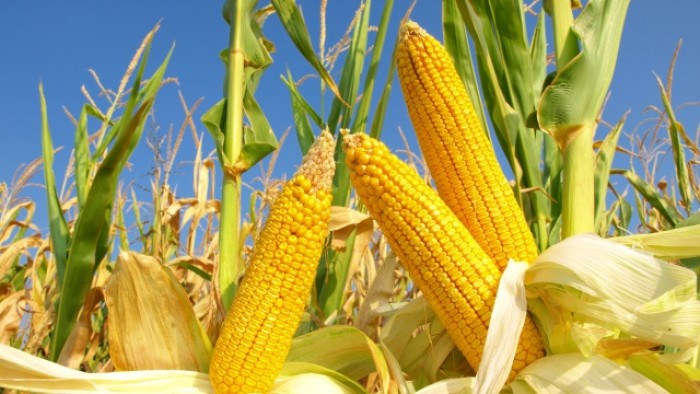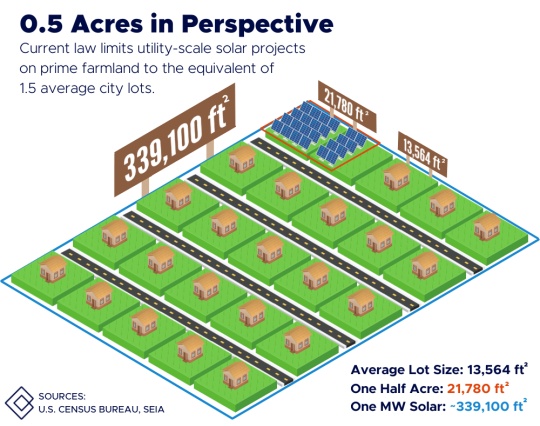Permitting and Prime Farmland: An Outdated Rule Stands in the Way of Minnesota’s Clean Energy Transition
 | Madelyn Smerillo, Regional Policy Manager |

 | Madelyn Smerillo, Regional Policy Manager |
The relationship between agriculture and renewable energy is evolving, with an increasing number of farmers considering leasing their land to solar developers. This mutually beneficial arrangement can provide farmers with a steady source of income, help diversify their revenue streams, and provide a pathway to help decarbonize Minnesota's sources of electricity. However, there is currently a rule that restricts energy development on prime farmland.(1) This rule not only poses a property rights issue for landowners but is also a substantial barrier to meeting the state's new 100% carbon-free electricity by 2040 standard. Clean Grid Alliance is hard at work and in conversations with a variety of stakeholders on potential changes to the rule.
The Rule
Minnesota Rule 7850.4400 subp. 4 states:
"No large electric power generating plant site may be permitted where the developed portion of the plant site, excluding water storage reservoirs and cooling ponds, includes more than 0.5 acres of prime farmland per megawatt of net generating capacity...unless there is no feasible and prudent alternative."
Written in 1982 for large generation facilities like nuclear, gas, and coal, the rule now has the unforeseen consequence of impacting solar development. Advocates for the rule at the time of writing referenced the state's policy to protect prime farmland. While it may be true that the development of more permanent infrastructure such as fossil fuels would contradict this effort, solar energy does not. In fact, solar protects the land underneath panels during the project lifetime and requires only a fraction of the agricultural land available in Minnesota.
The Problem
Solar farms are developed on prime farmland for a variety of reasons, including access to the electric grid. Minnesota has a significant amount of prime farmland, which makes it hard to avoid. Farmland is also typically flat enough for solar projects and is well-drained.

The prime farmland rule restricts development to an unworkable extent, and the Public Utilities Commission (PUC) recognizes this. In each solar project that goes through the permitting process, developers opt to demonstrate the lack of a feasible and prudent alternative and end up siting projects on greater than the allocated 0.5 acres of prime farmland per megawatt (MW). As a result, the rule is ignored, and the permit is granted. Therefore, the existing rule does not adequately consider prime farmland in development and only causes uncertainty in the permitting process for the solar farm developer.
The 17.3-Million-Acre Picture
 Minnesota is home to about 25.5 million acres of farmland, about 17.3 million acres (2) of which are considered "prime." For perspective, 17.3 million acres is larger than the area of the state of West Virginia, which, in its entirety, encompasses 15.5 million acres.
Minnesota is home to about 25.5 million acres of farmland, about 17.3 million acres (2) of which are considered "prime." For perspective, 17.3 million acres is larger than the area of the state of West Virginia, which, in its entirety, encompasses 15.5 million acres.
Minnesota has 5,800 MW of solar in the MISO Queue, requiring approximately 50,000 acres of land. If all this solar were to be sited exclusively on prime farmland, it would use less than 0.3% of the land considered "prime." It is the policy of the state of Minnesota to reach 100% carbon-free electricity by 2040, and the solar projects in the MISO Queue are a substantial part of meeting that goal. This paints a clear picture: there is plenty of land to go around, and solar energy will occupy only a fraction of a percent of it.
Agricultural Impact Mitigation
Even though the prime farmland rule does not adequately serve as a consideration for agricultural land use in permitting, other parts of the permitting process do. As a requirement of permits, solar developers submit Agricultural Impact Mitigation Plans (AIMPs) to identify measures they will take to avoid, correct, or mitigate potential adverse impacts to agricultural land resulting from construction, operation, and decommissioning of the project. These plans are flexible to accommodate the needs of the site and surrounding environment.
According to guidance written collaboratively by the MN Departments of Commerce and Agriculture, AIMPs might include:
- Perennial vegetation which would preserve or improve the current soil quality over time;
- Pollinator habitat preserved or developed;
- Co-locating with agricultural uses, such as grazing or harvesting forage.
“Solar does not threaten agriculture; it's an impermanent land use that preserves farmland for decades at a time.
It is important to highlight that solar projects greatly benefit the land underneath panels. Altogether, conservation and vegetation plans amidst renewables lead to healthier soil, improved water storage and filtration, sequestration of carbon, erosion reduction, habitat preservation and lower local energy costs. Developers work with the Minnesota Department of Agriculture to deploy strategies that maximize benefits to the land and surrounding environment over a project lifespan. Solar does not threaten agriculture; it's an impermanent land use that preserves farmland for decades at a time.
Property Rights
The prime farmland rule also poses a significant property rights issue. Landowners have the right to make decisions about how their land is used. Renewable energy provides a variety of benefits to the landowner, the community and the environment as well. Solar is a drought-proof investment that can be harvested all year long, diversifying income portfolios for decades at a time and preserving the land underneath panels for other uses after the life of the project.
“A landowner can sell their property to a housing developer without issue, but if they want to lease their land to a solar developer, suddenly there's a barrier.
At a recent event, CGA heard from farmers that the biggest threat to agricultural land is not solar, but permanent developments like housing and urban sprawl. One landowner commented that a landowner can sell their property to a housing developer without issue, but if they want to lease their land to a solar developer, suddenly there's a barrier. Solar keeps agricultural land in the hands of family farmers who must be able to choose how best to use their land without infringement by the government or neighbors with different opinions.
The Solution
CGA believes in building partnerships to build power. That's why we are working with a broad group of stakeholders from energy, agriculture, government agencies, and the legislature together to find an alternative pathway to consider the use of prime farmland in solar development. Agriculture is one of Minnesota's most valued industries and will be an essential player in the future of solar across the state. Proactive collaboration is key to solving this problem for the benefit of farmers, developers, and all Minnesotans.
If you are interested in collaborating with CGA on the prime farmland rule, please contact Madelyn Smerillo at msmerillo@cleangridalliance.org for more information about our ongoing efforts.
(1) Prime Farmland: "Prime farmland is land that has the best combination of physical and chemical characteristics for producing food, feed, forage, fiber, and oilseed crops, and is also available for these uses (the land could be cropland, pastureland, rangeland, forest land, or other land, but not urban built-up land or water)."
(2) This figure excludes forest land but includes Cropland, CRP land, Pastureland, Rangeland, and other rural land.
Related Blogs
Plenty of Land to Go Around
Renewables and Property Rights
Read the Fact Sheet
MN Solar and Agriculture